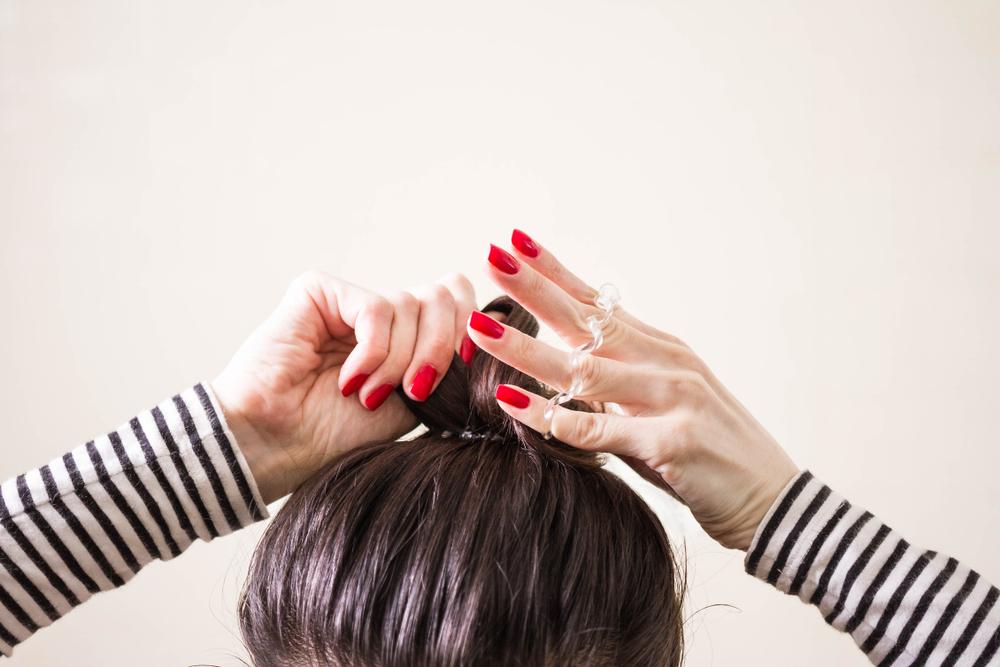Be Careful, Hair Ponytails Are Too Tight Can Make You Fall!
Brushing hair has become a habit for those who have long hair. Unfortunately, the hair is too tight and often turns out to cause hair loss called traction alopecia. For more details, see the following explanation.

What is traction alopecia and what are the symptoms?
Traction alopecia is hair loss caused by the same recurrent, frequent, and prolonged withdrawal. This happens usually when you often tie your hair with a too tight pigtail or braid it. Pulls that are too strong and repetitive can damage the follicle and pull the hair out of the scalp. As a result, hair experiences hair loss.
In addition to falling out, here are some symptoms that mark traction alopecia, namely:
- Redness, itching, pain, and ulcers appear on the scalp.
- The distance of the hair on the scalp widens (the scalp becomes more visible).
- The hairline around the forehead that looks more backward.
- Small pimples that appear on the scalp.
- Thinning hair is even broken in parts that are usually given pressure.
- Inflammation in the hair follicles (folliculitis).
According to the American Academy of Dermatology, humans lose about 50 to 100 strands of hair per day. This hair loss will later be replaced by new hairs.
Although hair loss due to tight hair can grow back, if left unchecked then the consequences can be serious. Hair follicles can be damaged and hair does not grow back causing baldness in some parts of the hair.
Various causes of traction alopecia
Some common causes of traction alopecia, namely:
- Certain hairstyles, such as too tight hair, too tight braids, and a series of other hairstyles.
- Hair extension. Tying tight hair to the base of real hair can strain hair roots.
- Helmet or headband that is too tight.
- Hair accessory.
- Hair that is too long to become heavy and attract hair follicles.
- Cream or hair gel.
- Use of viscera with chemicals that can reduce hair strength.
- Generally, older people will be more prone to loss due to this because the strength of the hair begins to weaken.
Overcoming traction alopecia due to too tight hair
If you have already experienced traction alopecia due to too tight hair and various other causes, immediately consult a dermatologist. Usually, the doctor will examine the scalp and take a tissue sample to look for other possible causes of hair loss.
The main treatment that doctors will recommend is to change your hairstyle. Avoid tying your hair too tight and using a variety of hair ties with material that is too strong. In addition, if your hair is too long the doctor will ask you to cut it. Not only that, reduce the use of vise and chemicals that can damage the hair.
Your doctor will also prescribe medications that are suitable for your current condition, such as:
- Antibiotics to prevent infection in open wounds on the scalp.
- Topical steroids to reduce swelling in the scalp.
- Antifungal shampoo.
- Minoxidil (Rogaine) to regrow lost hair.
- Biotin supplements to strengthen your hair.
If you experience severe and permanent baldness, your doctor will usually offer to do a hair transplant procedure.
Prevent traction alopecia
Preventing of course is much better than treating. This you need to apply in everyday life, including for hair health. Here are some things you can do to prevent hair loss due to too tight hair, namely:
- Grind your hair and if you don't wash it too tight.
- Don't use rubber bands for pigtails.
- Limiting the use of locks and other chemicals such as hard hair gel.
- Routinely change hair styles every week to prevent tension in one area of the scalp.
- Start practicing this from now on so that the health of your hair is maintained. Don't let you regret it later on because of bad habits that you keep.